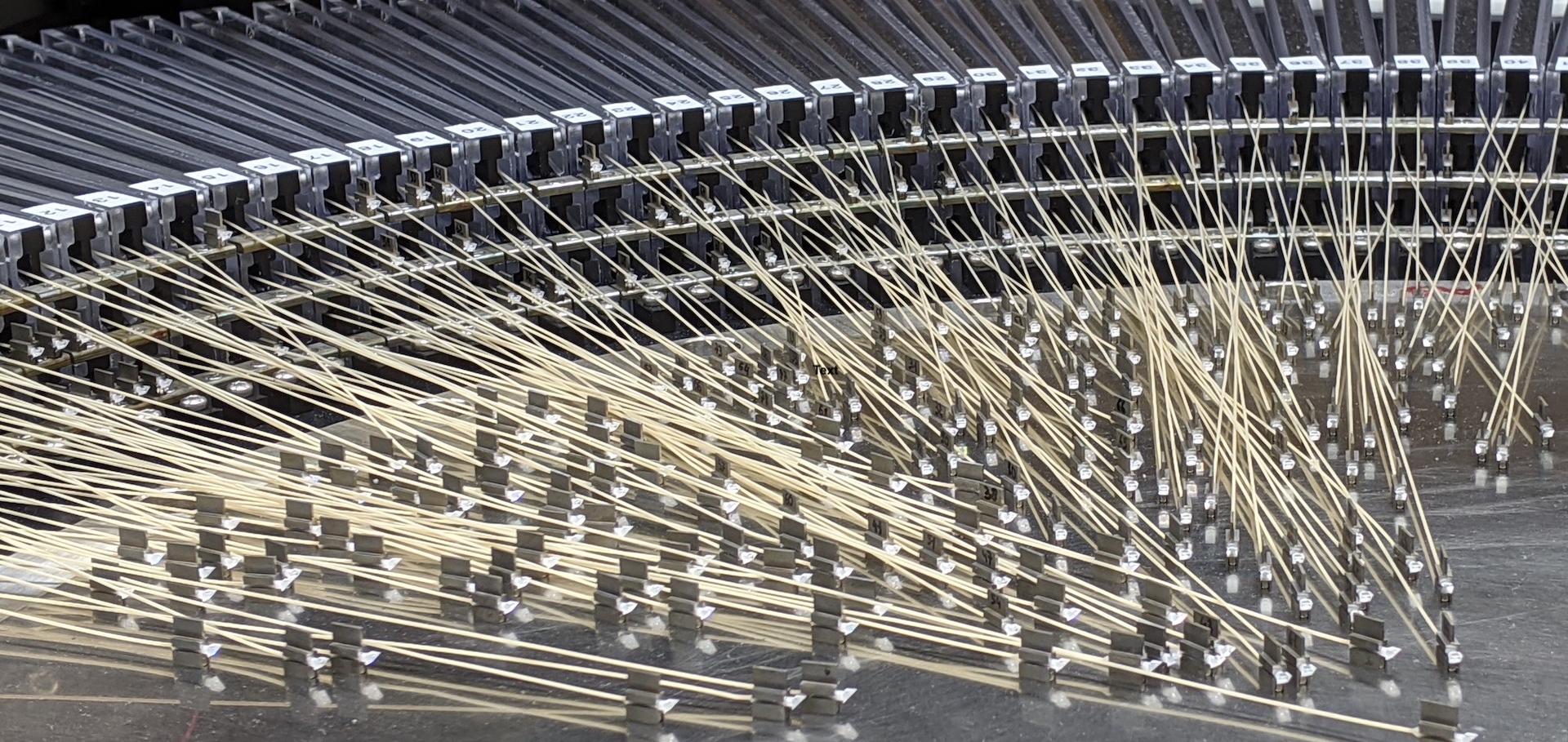Bright Lyα emitters at z ~ 9: Constraints on the LF from HizELS
Monthly Notices of the Royal Astronomical Society: Letters 398:1 (2009)
Abstract:
New results are presented, as part of the Hi-z Emission Line Survey (HizELS), from the largest area survey to date (1.4 deg2) for Lyα emitters (LAEs) at z ~ 9. The survey, which is primarily targeting Hα emitters at z < 3, uses the Wide Field CAMera on the United Kingdom Infrared Telescope and a custom narrow-band filter in the J band and reaches a Lyα luminosity limit of ~1043.8ergs-1 over a co-moving volume of 1.12 × 106 Mpc3 at z = 8.96 ± 0.06. Only two candidates were found out of 1517 line emitters and those were rejected as LAEs after follow-up observations. The limit on the space density of bright LAEs is improved by three orders of magnitude, consistent with suppression of the bright end of the Lyα luminosity function beyond z ~ 6. Combined with upper limits from smaller but deeper surveys, this rules out some of the most extreme models for high-redshift LAEs. The potential contamination of future narrow-band Lyα surveys at z > 7 by Galactic brown dwarf stars is also examined, leading to the conclusion that such contamination may well be significant for searches at 7.7 < z < 8.0, 9.1 < z < 9.5 and 11.7 < z < 12.2. © 2009 The Authors. Journal compilation © 2009 RAS.Bright Lyman-alpha Emitters at z~9: constraints on the luminosity function from HiZELS
(2009)
HiZELS: a high redshift survey of H-alpha emitters. II: the nature of star-forming galaxies at z=0.84
(2009)
HiZELS: A high-redshift survey of Hα emitters - II. the nature of star-forming galaxies at z = 0.84
Monthly Notices of the Royal Astronomical Society 398:1 (2009) 75-90
Abstract:
New results from a large survey of Hα emission-line galaxies at z = 0.84 using the Wide Field Camera on the United Kingdom Infrared Telescope and a custom narrow-band filter in the J band are presented as part of the High-z Emission Line Survey (HiZELS). The deep narrow-band images reach an effective flux limit of FHα ∼ 10-16 erg s-1 cm-2 in a comoving volume of 1.8 × 105 Mpc 3, resulting in the largest and deepest survey of its kind ever done at z ∼ 1. There are 1517 potential line emitters detected across ∼1.4 deg2, of which 743 are selected as Hα emitters, based on their photometric and spectroscopic redshifts. These are then used to calculate the Hα luminosity function, which is well fitted by a Schechter function with L* = 1042.26±0.05 erg s-1, φ* = 10-1.92±0.10 Mpc-3 and α = -1.65 ± 0.15, and are used to estimate the volume average star formation rate (SFR) at z = 0.845, ρSFR: 0.15 ± 0.01 M⊙ yr -1 Mpc-3 (corrected for 15 per cent active galactic nucleus contamination and integrated down to 2.5 M⊙ yr -1). These results robustly confirm a strong evolution of ρSFR from the present day out to z ∼ 1 and then flattening to z ∼ 2 using a single star formation indicator: Hα luminosity. Out to z ∼ 1, both the characteristic luminosity and space density of the Hα emitters increase significantly; at higher redshifts, L* continues to increase, but φ* decreases. The z = 0.84 Hα emitters are mostly disc galaxies (82 ± 3 per cent), while 28 ± 4 per cent of the sample shows signs of merger activity; mergers account for ∼20 per cent of the total integrated ρSFR at this redshift. Irregulars and mergers dominate the Hα luminosity function above L*, while discs are dominant at fainter luminosities. These results demonstrate that it is the evolution of 'normal' disc galaxies that drives the strong increase in the SFR density from the current epoch to z ∼ 1, although the continued strong evolution of L* beyond z = 1 suggests an increasing importance of merger activity at higher redshifts. © 2009 RAS.Baryonic Acoustic Oscillations
SCIENCE WITH THE VLT IN THE ELT ERA (2009) 141-145


